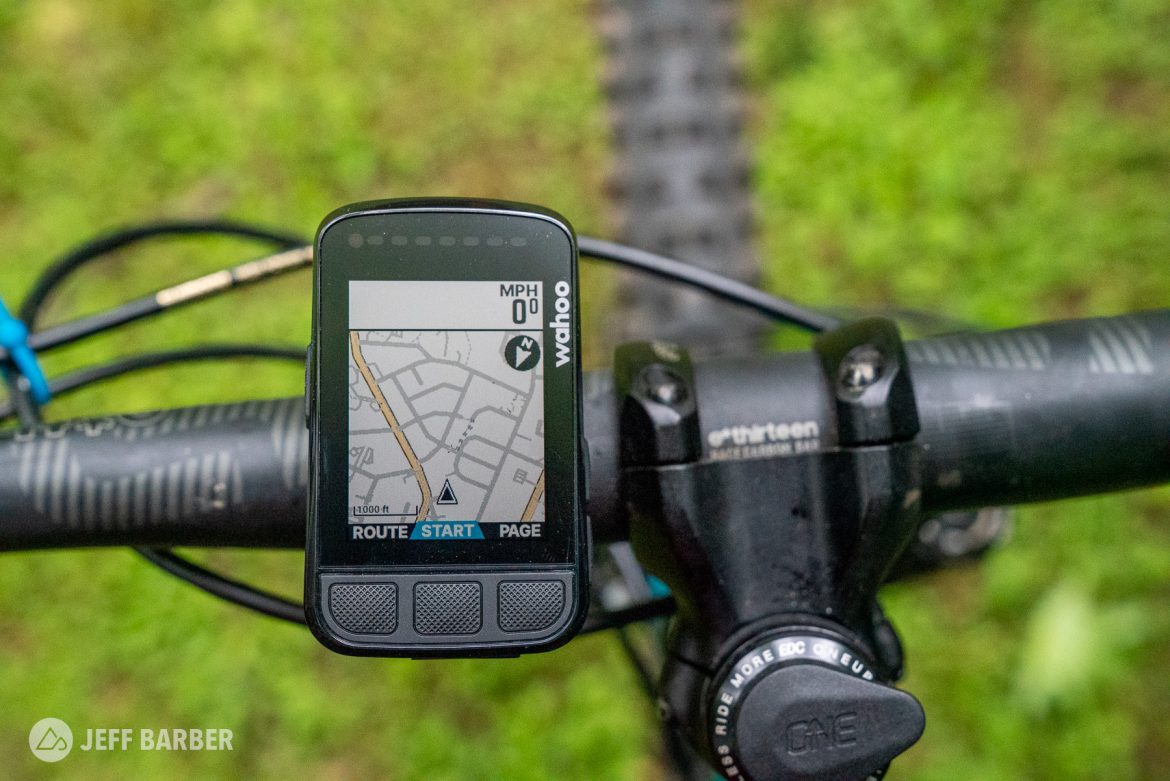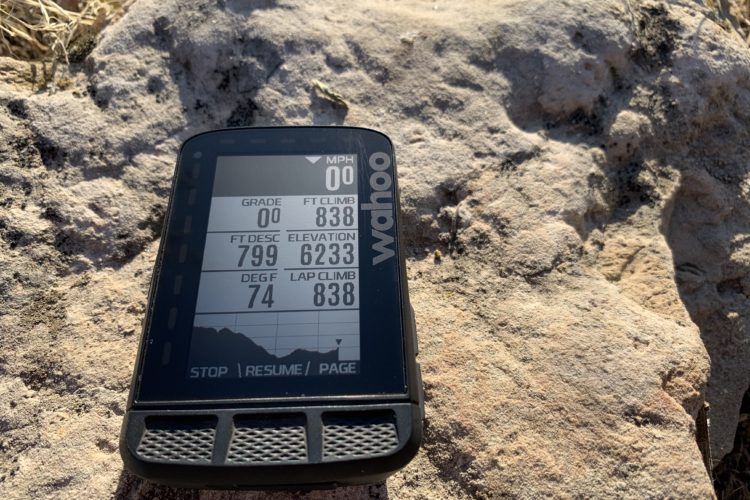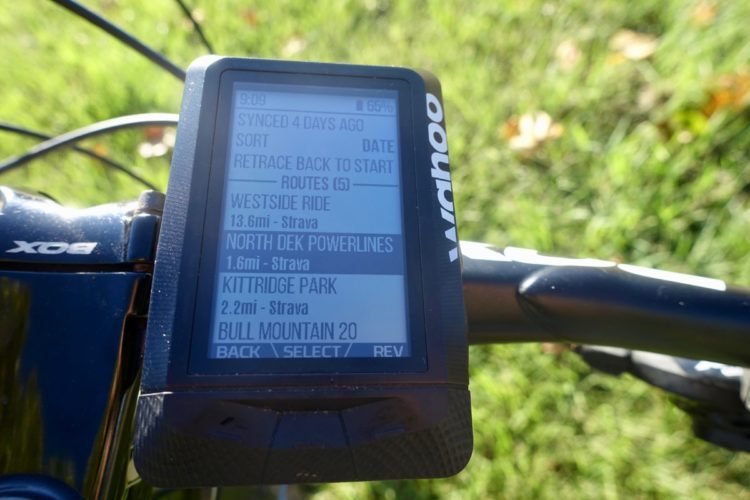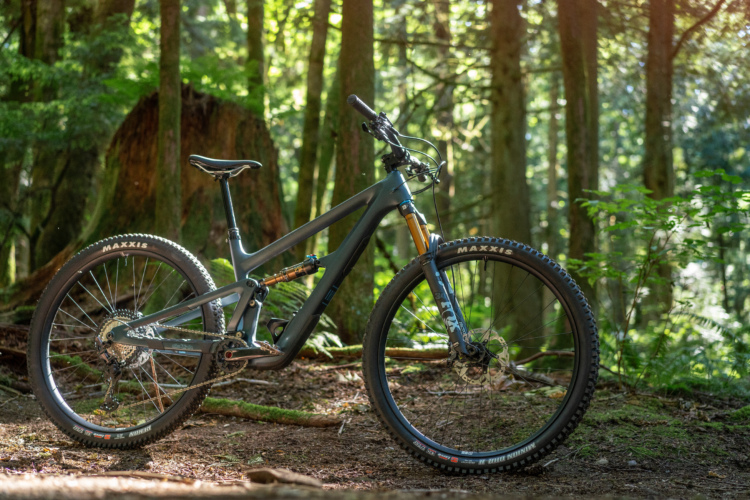
Wahoo just updated their smaller, “race-worthy” GPS cycling computer, the Wahoo Elemnt Bolt V2. Notably, the Bolt gets a color screen, more on-board memory, and improved navigation functionality. I’ve been riding with a pre-release version of the device for a little over a week and here’s what I’ve learned so far.
Form factor
At first glance, the size and shape of the Bolt is basically unchanged, but there are some key differences. For starters, the device is longer and slightly thinner than before. My test unit weighs a fraction of a gram less than 70g, which makes it about eight grams heavier than its predecessor. Unlike the previous Bolt, the front-facing buttons are convex and are easy to operate with gloved hands. This is welcome news as owners complained that water tended to pool on top of the former concaved buttons during wet rides. Speaking of water, the Bolt is still IPX7 rated.


Of course the big news is that the Wahoo Elemnt Bolt now features a color screen. Unlike a smartphone, the Wahoo’s screen is limited to 64 colors, giving maps a smooth, marker-ink look. Wahoo uses the colors sparingly which makes the screen easy to read at a glance, and it looks brilliant in any light conditions. I’ve tested the unit at night, and in full-sun daytime rides, and found it’s easy to read at both extremes and in between.
Digging into the specs, while the screen keeps its 2.2″ size, it appears the 240×300 pixel count offers slightly less resolution than the prior, black-and-white version which claimed 240×320 pixels. It’s not clear where those extra pixels went however, as my eyes were fooled into thinking resolution was actually increased. A few riders who own older Wahoo units also commented that the screen appears to be higher resolution than before. Like other Wahoo GPS units, the new Bolt features an LED bar separate from the screen that can indicate things like speed and navigation cues.
The rechargeable battery is said to offer up to 15 hours of ride time, and the Elemnt Bolt features a modern USB-C plug. Another notable upgrade is the memory, which has been quadrupled to 16Gb overall. Naturally the device can talk to GPS, Galileo, and GLONASS satellites, and speaks Wi-Fi, ANT, and Bluetooth. There’s also a barometric altimeter and an ambient light sensor that automatically adjusts screen settings for maximum readability.

Finally, the Wahoo Elemnt Bolt attaches using the same quarter-turn mount system as previous Wahoo units. There are a few different mounts included in the box, and I’ve used some of the bits and pieces to rig up my own quick-mount system, as shown in the photo above. It doesn’t look pretty, but it makes it easy to move the device from bike to bike without having to invest in a pile of extra bar mounts. Wahoo likes to tout how aerodynamic the Bolt is, though many mountain bikers like me couldn’t care less (see photo, again).
Wahoo elemnt – On the trail
Thanks to the beefed up memory inside the Bolt, maps of roads and trails within the USA and Europe came pre-installed on my test unit. Maps for additional areas can be added easily using Wi-Fi.


The Wahoo Elemnt Bolt allows riders to navigate trails and roads in a number of ways. For mountain bikers, the most common will be to load specific trail routes using one of the Wahoo third-party data providers like Singletracks. You can also choose a spot on the map and the Bolt will create a route to that point, with turn-by-turn cues along the way. And if you get off track, the Bolt will automatically provide re-routes.
On a recent ride someone mentioned the new Bolt sounds “different” and while I can’t confirm, it does seem to be much louder than previous units which is a welcome feature in traffic, though less so on quiet rides in the forest. There may be a volume control somewhere but I wasn’t able to find it.
By default, there are three basic screens to scroll through during the ride, and each can be customized to some degree. The second data screen includes a small plot showing elevation ridden, which is a nice feature that not all GPS units include.
Wahoo also managed to squeeze in some cool social features like live, on-map tracking for meeting up with friends who may become separated during the ride. There’s also Strava Live segment previews and alerts for charging KOMs.

Because the Whoo Elemnt Bolt screen is smaller than the average GPS, I found the map screen doesn’t always show me as much area as I would like. It’s easy to zoom in and out to see upcoming roads and trails using the buttons on the right side but it does take a little effort. Even more of the map screen is taken up by route cues during navigation, but fortunately, it’s easy to customize and remove data from the map screen for a larger view. I got confused a few times by the horizontal line separating the speed data from the map, thinking it was a road; it would be nice to see this area utilize a solid-color background to separate it more clearly.
The Elemnt Roam is the other GPS unit in the Wahoo line, offering a larger color screen along with a heftier price tag. The Bolt, priced at $279, adds about $50 to the cost of the previous black and white version. It’s not clear if Wahoo plans to continue offering more affordable black and white units.
As usual the Wahoo software, both on device and in-app, is a pleasure to use. The screens and menus are generally intuitive and require little effort for getting out the door and going for a ride. Now, if the Bolt could just direct me to the nearest brewery after the ride, I would be set!
- Price: $299
- Available at Backcountry and other online retailers.










0 Comments